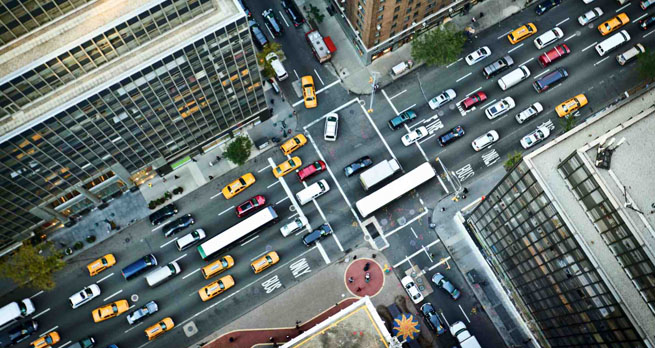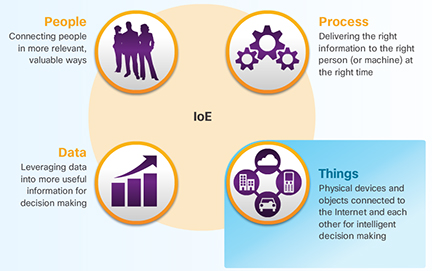2.1.1 What are things?
Currently, the things pillar, highlighted in Figure 2, comprises various types of traditional computers and computing devices, such as desktops, laptops, smartphones, tablets, mainframes, and computer clusters. However, the IoT will include all types of objects, including objects and devices that are not traditionally connected. In fact, Cisco estimates that 99 percent of physical objects will one day be connected.
These objects contain embedded technology to interact with internal servers and the external environment. These objects are network-capable, and can communicate across a secure, reliable and available network platform. However, the IoT refers to a single technology transition; the ability to connect objects that were previously unconnected so those objects can communicate across the network.
The availability of data, when objects can sense and communicate, has the capability of changing how and where decisions are made, who makes the decisions, and the processes that individuals and businesses use to make those decisions. The IoE is built on the connections among people, processes, data, and things. These are the four pillars of the IoE, as shown in the figure. However, the IoE is not about these four dimensions in isolation. Each amplifies the capabilities of the other three. It is in the intersection of all of these elements that the true power of the IoE is realised.

